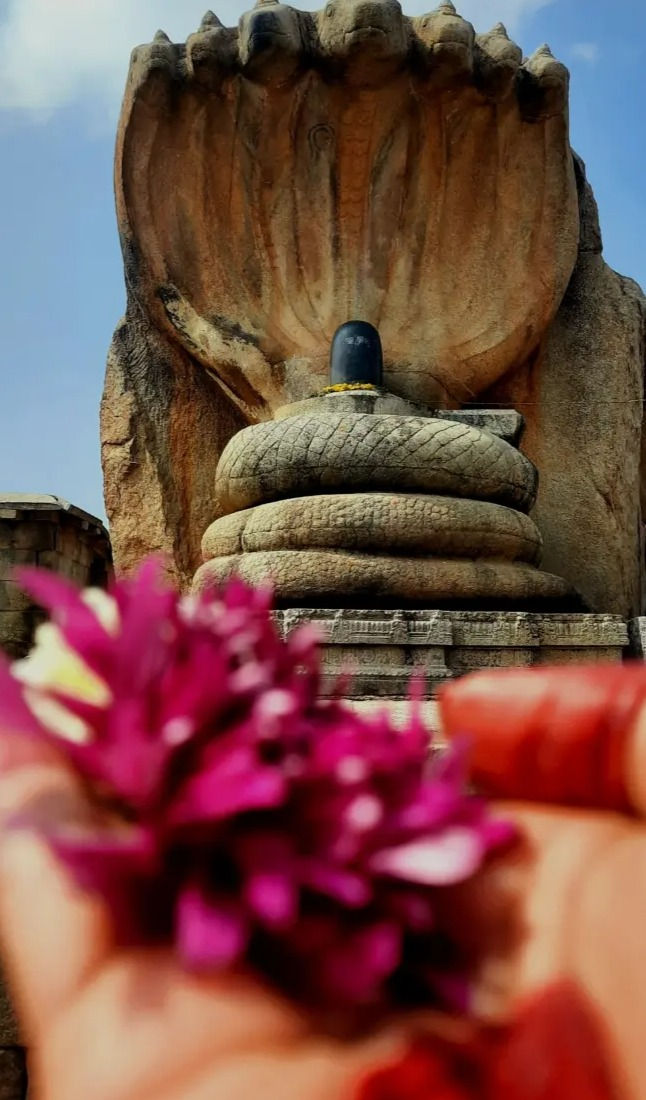Kathak - the Dance of Wholeness
- yagyasrivastava017
- Feb 22
- 7 min read
"The dance is the mother of the arts. Music and poetry exist in time; painting and architecture in space.
But the dance lives at once in time and space." - Curt Sachs (German musicologist)
Any gesture in dance is a coming together of Gati (flow or movement) and Sthanaka (stillness), and is rooted in the state of Sthiti (the un-manifest or Silent state) of the dancer. From this point, the process of creation of further movements begins, based on Laya (tempo) and Taal (rhythm) – the two crucial elements of music and dance.
All of life is this inter-play of stillness and dynamism. The stillness of a sap is manifested in the beauty of the trunk, the branches, leaves, flowers and fruits. So is the stillness of a dancer manifested in dance through various movements of the body and expressions of the face, with each transformation complete in itself and also coming together as a Whole.
The purpose of the practice of Indian classical dances has been the experience of this creation from the Self and of returning back into the Self, both for the dancer and the viewers.
Kathak, one of the eight of such classical dance styles of India, is a beautiful form full of graceful, fluidic movements and Bhaav - the experience and expression of a mood or an emotion. Various movements of the dance combine with Bhaav to create “Rasa”.
The Concept of Rasa in Vedic Arts
The word “Rasa” literally means “juice”, “taste” or “essence” and is found in various Vedic literature including the RKVeda, Atharvaveda and the Upanishads in different contexts and meanings. In Indian arts, Rasa is the aesthetic flavor, or the essence of any written, visual or aural work that creates an emotional feeling and elicits the desired response from the audience.
The Rasa theory for Indian arts and aesthetics is found in sage Bharata’s colossal work, the NatyaShastra (5th Century B.C), which predates Aristotle’s Poetics, and forms the basis of all Indian performing arts.
In its truest expression, any work of visual arts, whether dance, music or theatre, should be able to raise the level of consciousness of both the performer and the audience by making them travel within their own minds.
The experience of “Rasa” is said to be the end objective of any visual or performing arts, and is usually associated with the feeling of “Ananda” or bliss. Rasa, therefore, can be seen as the source and the outcome of any creative work – a poetry, music, dance, painting or sculpture.
Though the origins of the Rasa theory is in Indian arts, its application over time has transcended disciplines and cultures and the concept has been applied to different philosophies and even in fields of psychology and neuroscience.
In Kathak, various Nritya or expressive pieces are performed, that evoke different emotions based on the nine Rasas.

Kathak – the Origins and History
The origins of Kathak can be traced back to the earliest surviving texts for performing arts, the NatyaShastra.
The word “Kathak” comes from the root word “Katha”, which means a story. In ancient India, kathaks or kathakaar were travelling bards who narrated stories from mythology through movement and mime to the accompaniment of music. These performances were also prominently held at temples as an offering or prayer to the Vedic Devata.
Dancing in a RangaMandap and at a NagaLingam in a temple in Andhra Pradesh, India
Kathak came to be greatly influenced by the Bhakti movement in India around the 15th century. Themes of devotion to Lord Krishna (an incarnation of Lord Vishnu) and episodes from his life and times became central. Songs and poetry depicting the love of Krishna and his consort Radha written by many saint-poets began to be danced. Songs in praise of the Gods and Goddesses were also composed in regional languages and dialects with the intent of making the knowledge found in spiritual texts more relatable to a wider public and these messages of divine love and surrender were spread across the land.
The medieval ages, however, saw large-scale destruction of temples and Vedic literature across India. Major devastation was carried out by the Mughal rulers in North India, forcing the dance style of Kathak to move from temples to the royal courts. The dance style still continued to flourish and also imbibed elements of Persian music and art. This cross-cultural exchange brought about an evolution in the instruments of music used, the style of music and poetry and even movements and gestures.
Like all Indian classical dance forms, Kathak too continued to survive over centuries as an oral tradition.
The 19th century saw a decline of the classical dance forms when the golden land of India came under the British rule and it was only after India’s independence that the arts and culture prospered again and expanded into public domain and the world-stage.
Over the many years of evolution, Kathak is now popularly performed and taught under three major schools or “Gharana”, based on the specific regions of North India where it thrived. These are the Lucknow Gharana, Jaipur Gharana and Banaras (now known as Varanasi) Gharana.
Although the movement vocabulary and aspects of Abhinaya and Bhaav are largely similar across the three Gharanas, there are certain differentiating features. The Lucknow Gharana, for example, has greater emphasis on graceful body movements and expressions of the face to emote Bhaav and Rasa while the Jaipur Gharana has more focus on speed with intricate rhythmic pieces and fast-paced Nrtta.
The Aural Experience in Kathak
Sound or music naturally plays an important role in any dance. Since Kathak belongs to the Northern part of India, the music used is primarily Hindustani classical, and also includes light classical styles of Ghazal, Dadra, and Thumri. The accompanying instruments are usually a twin-drum called the Tabla and a string instrument called Sarangi. Sitar, flute and harmonium are other instruments that are also used.
Ghungroos, a string of brass bells that are tied around the ankle, add not just to the aural experience of the dance but also has deep spiritual relevance. The ghungroo produces the sound matching the accompanying music, and as a Kathak dancer creates the sounds of Taa Thei Thei Tat, (the basic Bol or syllables for Kathak), the reverberation against the earth and its repetition at different speeds creates an almost transcendental energy.

Raising Consciousness with Kathak Dance
Yajnasya phalam asnute
Sa sarvakaman apnoti Moksopayam cha vindati….
The offering of dance to the accompaniment of vocal and instrumental music assures the merit equivalent to a yagya…. It not only fulfills all desires but assures Moksa (liberation) for the Sadhaka (the devotee)
- Vishnu Dharmottara 3, 34 26-29
For any seeker, a spiritual practice starts with the consecration of the tangible and intangible space. This may involve an elaborate arrangement with flowers, incense, fruits as offerings to the divine or a simple act of choosing a small space where one can be comfortably seated for their spiritual practice without any external disturbance. This can be followed by chanting or a silent prayer to one’s Guru (Master) and the divine.
Similarly, any practice of Kathak begins with a Bhoomi Pranam, an obeisance to the five elements of space, air, fire, water and earth that make up creation, and to the Guru. The dancer also performs a Ranga Mancha Puja, which is an offering to the stage, with the intent to invoke divine blessings and protection for the dancer as well as the audience that take this journey together.

The basic stance in Kathak dance is Samabhanga, Samapada and Samadamsa Mudra with the hands (also called Hamsasya in the text AbhinayaDarpan and Arala in another text called Sangitaratnakar). The word Sama means “to be in balance” or “in an equal position”. Therefore, the body is equally balanced between the right and left sides.
There is perfect symmetry in the way the feet, torso, hands and head are held. This stance creates a geometry of lines, triangles and circles and an energy-diagram, or a Mandala around the dancer. The body acts as a medium of the flow of spiritual energy through footwork, various movements of the Hastas (hands), body angles and Hasta Mudras.
The Hasta Mudra (gesture of the hand), is one where the forefinger touches the thumb and the hand is slightly curved. This Mudra is akin to the Jnan Mudra, and is used for focus, meditation or to denote transcendence. The hands holding this Mudra are kept at chest level.
All hand movements in Kathak begin and end with this mudra.
A graphic representation of a symmetrical Mandala in Kathak
While there is enormous spiritual symbolism inherent in Kathak dance, including performing a Vandana or obeisance to the Guru and the Vedic Devata, which could be an offering to Lord Ganesha, Lord Vishnu or the Divine Mother to start a performance and narrating stories from Vedic texts and literature, by taking various postures of the Gods and deities and infusing them with Bhaav and Rasa, the dancer also incorporates those values in her / his being.
The constant connection of the bare feet with the earth while dancing various rhythmic patterns is by itself therapeutic. The movement of the head, neck, torso, hips, thighs and feet along the linear axis of the spinal cord and coordinated breathing de-stresses the body and releases blockages, thereby making the nervous system more conducive to higher spiritual experiences.
Kathak is seeped deeply in Bhakti and Yoga. More than a performing art, it is an inward journey for both the practitioner and the viewers.
To sum up in the words of Rumi, “In order to understand the dance, one must be still. In order to truly understand stillness, one must dance.”















Comments